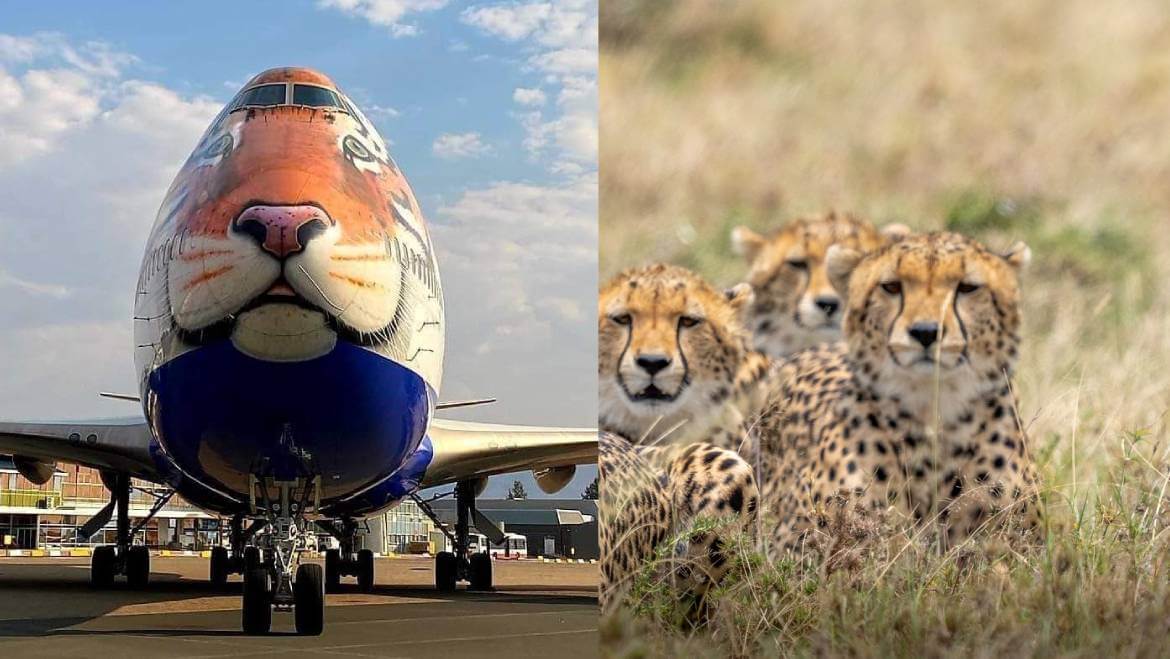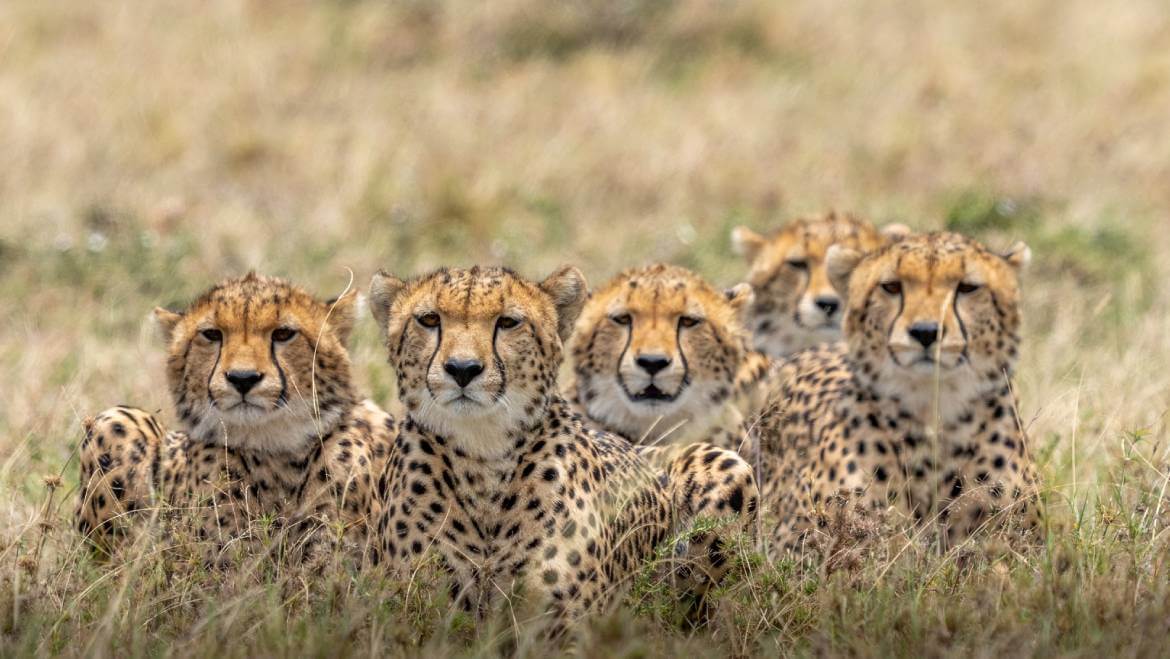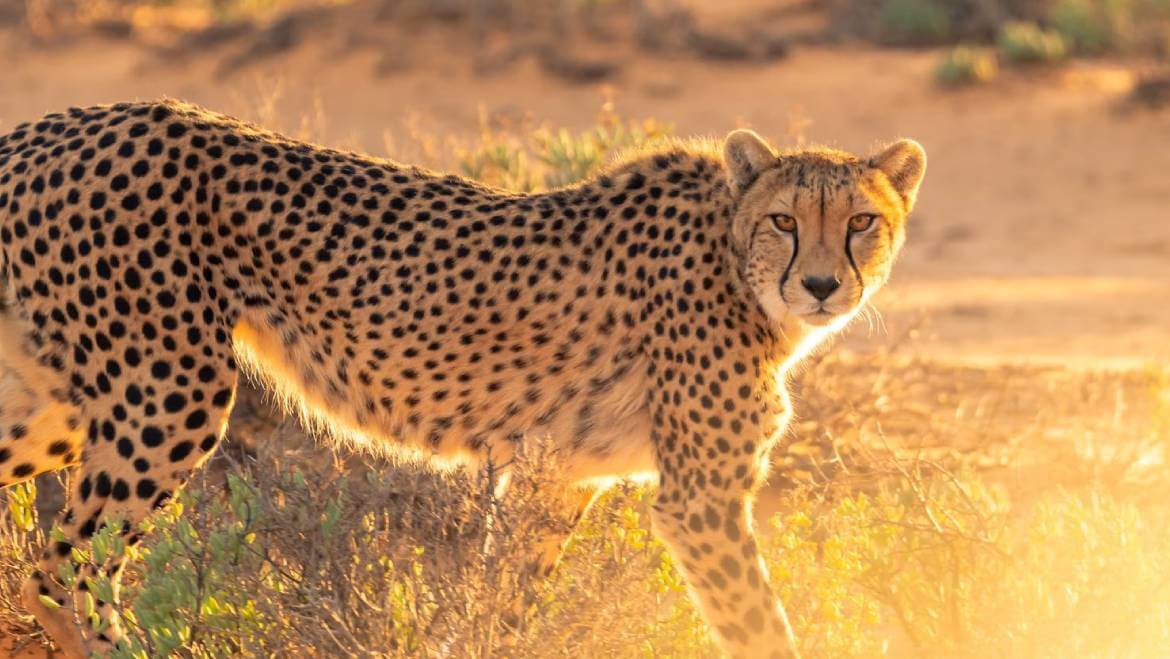On September 17th, after seventy years they went extinct in India, eight cheetahs brought from Namibia were released by PM Modi in Madhya Pradesh’s Kuno National Park. This translocation of eight cheetahs including five females and three males, is being made under the project of Cheetah Reintroduction in India, a part of a special agreement of intercontinental translocation project, one of the world’s biggest ever to happen. Moreover, this is the first time that a wild southern African cheetah is being introduced in Asia or India or any other continent.
Let’s know about the return of Cheetahs to India:
- On September 17, eight cheetahs brought from Namibia were released in Kuno National Park in Madhya Pradesh by Prime Minister Narendra Modi on his birthday.
- On September 15, a customised B747 passenger Jumbo Jet landed in Windhoek, the capital of Namibia to bring the big cats to India.
- The plane, which is painted with the face of a big cat, took off from Hosea Kutako International Airport, Windhoek and flew directly to India without a halt to refuelling, which has been measured for the health of the animals.
- The animals first arrived in Gwalior and then transported to Kuno Palpur National Park in Madhya Pradesh.
- The aircraft, which carried the eight cheetahs from Namibia, has been modified with spaces in the cabin to fit cages for the animals and to allow vets to have full access to the big cats during the flight. The aircraft has been sourced by Action Aviation, which is a large aircraft brokerage company.
Why Cheetahs Got Extinct in India?
The species was declared extinct in India in 1952 primarily due to hunting and habitat loss, as the Union Ministry of Environment told the Parliament. In 1947, the last three recorded cheetahs in India were killed by Maharaja Ramanuj Pratap Singh Deo of Korea in Madhya Pradesh.
Cheetahs were frequently used by the hunters to course blackbuck. They were relatively easy to tame and trained for sport-hunting. According to Divyabhanusinh, a famous wildlife expert, using cheetahs for hunting became the highest in the mediaeval period, especially during the Mughal empire. Emperor Akbar, alone, is recorded to have collected 9,000 cheetahs in total during his reign from 1556 to 1605. The capture of wild cheetahs made it difficult to breed and therefore there was a population decline, way before the starting of the British period in India.
Under British rule, to develop settlements and agricultural fields, forests were cleared and it resulted in losing the habitats for the species. Moreover, there is evidence to prove that Britishers considered the animals ‘vermins’ (harmful to crops, farm animals, or game, or which carry disease) and they started distributing monetary rewards for killing them from 1871 onwards.
Information on Cheetah Reintroduction Project in India

- The species went extinct in India in 1952. India then committed to returning cheetahs in several locations including Madhya Pradesh’s Kuno National Park where the staff have been trained, several dogs have been made specialised, facilities have been upgraded and large predators have been moved away.
- The concept of cheetah reintroduction was first introduced by Indian conversationalists along with CCF (Cheetah Conservation Fund), Bruce Brewer, Laurie Marker and Stephen J O’Brien in 2009. They kept visiting India and had consultative meetings with the government several times over the past 12 years.
- Speaking of CCF, the Cheetah Conservation Fund is a non-profit organisation working on saving and rehabilitating cheetahs in the world. It is headquartered in Namibia.
- Finally, in 2020, the Supreme Court of India approved Project Cheetah as a pilot programme in India.
- In July 2020, India and Namibia signed an MoU (Memorandum of Understanding) stating Namibia’s agreement to donate eight individuals to India as an initial part to launch the programme.
Introduction of Eight African Cheetahs:

Meet the cheetah here..
- A total of eight cheetahs were reintroduced in Kuno Wildlife Sanctuary, Saturday including five females who are aged between two and five and three males, aged between 4.5 and 5.5 years.
- All the animals are vaccinated and kept in isolation at the CCF centre in Namibia. They are all also fitted with a satellite collar to be traced.
- One of the interesting facts about cheetahs is that they all are selected based on their health, hunting skills and ability to contribute to a strong population.
- The first female, aged two, was found in south-eastern Namibia with its brother. It was rescued by CCF and has been living at the centre since September 2020.
- The second female cheetah, which is aged between three to four years, was captured in July 2020, near the CCF centre.
- The third female, who is aged two and a half years, was born in a private game reserve.
- The fourth and fifth female cheetahs are of the same age, about five years. The former one was rescued by wildlife conservation workers in a malnourished state in 2017. While the fifth one was captured from a village in north-western Namibia.
- Among the three males, two are brothers, aged about five and a half years. Since July 2021, they have been living in Otjiwarongo’s CCF Centre, which is also one of the best places to experience cheetah safaris in Africa.
- The third male cheetah, who is aged four and a half, was born in 2018 at Erindi Private Game Reserve.
- The eight cheetahs are in a quarantine zone in Kuno National Park for the time being to acclimatise with the surroundings. They are named Sasha, Savannah, Asha, Obban, Elton, Freddy, Cibili and Saisa.
Now, let’s know some details about Kuno Palpur National Park
- It was established in 1981 as a wildlife sanctuary with an area of 344.686 square kilometres.
- Kuno Palpur National Park is located in Madhya Pradesh, Sheopur and Morena Districts.
- In 1990, Kuno Wildlife Sanctuary became a possible site to implement the Asiatic Lion Reintroduction Project as a part of strengthening wildlife tourism in Madhya Pradesh.
- Villagers were shifted outside the forests and an area of 924 square kilometres of the buffer zone was added between 1998 and 2003.
- In 2009, it became a possible site to reintroduce cheetah in Madhya Pradesh.
- In 2018, it was given the status of a national park and enlarged by an area of 413 square kilometres.
- Some of the main fauna of the park are the Indian leopard, sloth bear, jungle cat, Indian wolf, striped hyena, Bengal fox and many more.
- The park also attracts tourist who wants to experience birdwatching. Some of the birds found here are Honey badger, ruddy mongoose, Indian grey mongoose, Indian hare etc.
- The park is one of the lesser-known wildlife vacation spots under Madhya Pradesh Tourism and hope, it will be the best place to have cheetah safari holidays in India.
- Kuno National Park is selected for the new home for the eight cheetahs as geographically it is located very close to the Sal forests of Koriya, where the native cheetahs were last spotted about seven decades ago. Koriya is now a part of Chhattisgarh.
- During the ceremony of releasing cheetahs in the wild, an official of the park also said that Kuno National Park has adequate space to give shelters to such 20-25 big cats in the future.
Like & Follow our social media accounts at Twitter, Facebook, Linkedin & Instagram for getting the latest updates & offers on holiday packages.
Disclaimer: This content is written by our team of expert Travel Writers with deep research. In case you find any incorrect information or missing information, please do send your valuable inputs at webmaster@tourmyindia.com. We will update the content as soon as possible with respect to your inputs.
We do not take credit for some of the licenced paid images used in our blogs, whether from Google Images, Fotolia & Shutterstock. All such images are the copyrights of their respective owners and we try to provide credit for them wherever we can. If, however, any copyright image has been used on our blog, the concerned person can either mail us directly to remove the image or provide credit to whomsoever the image may belong to.

 +91-9212777225
+91-9212777225 Plan Your trip
Plan Your trip

























